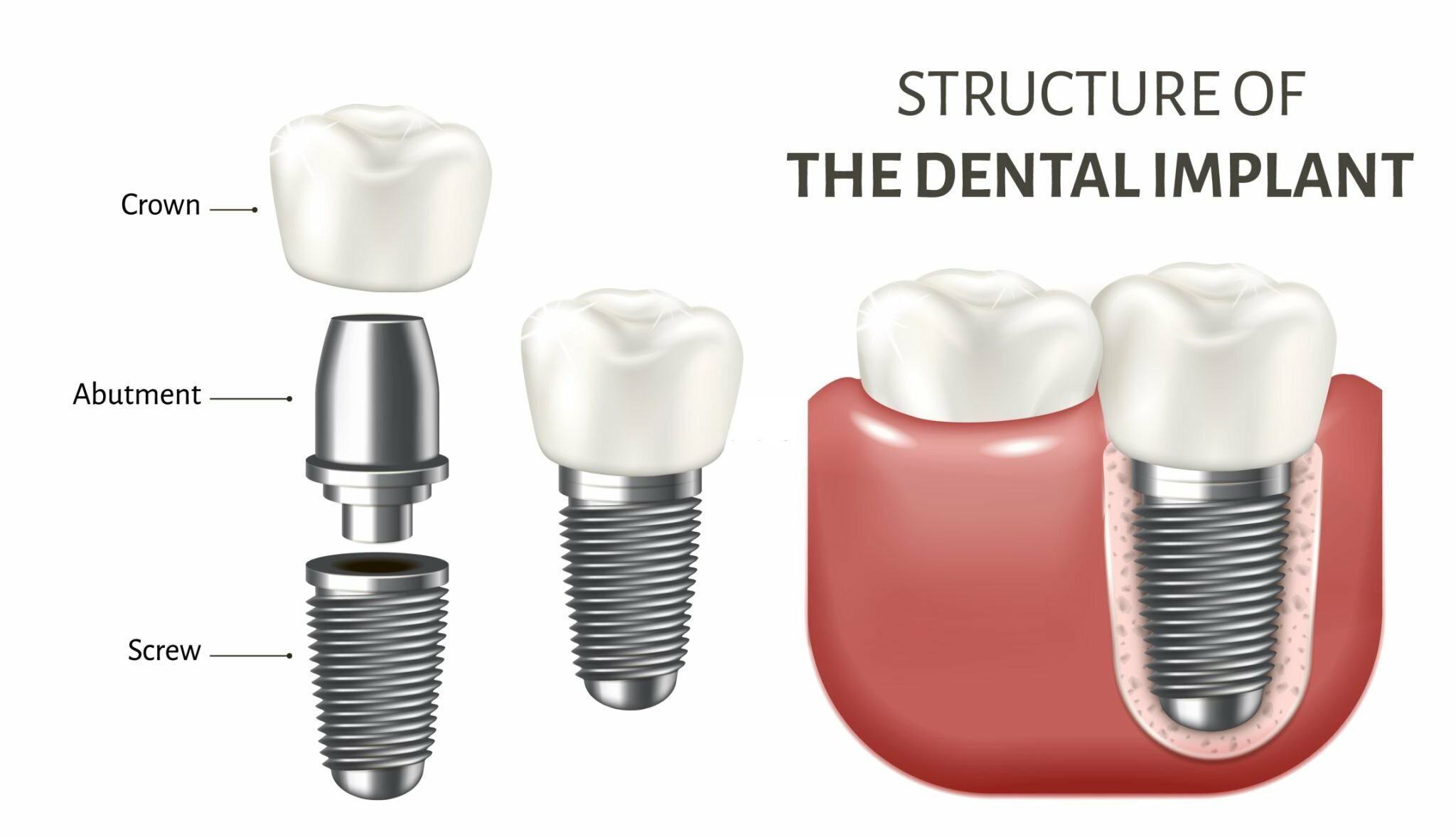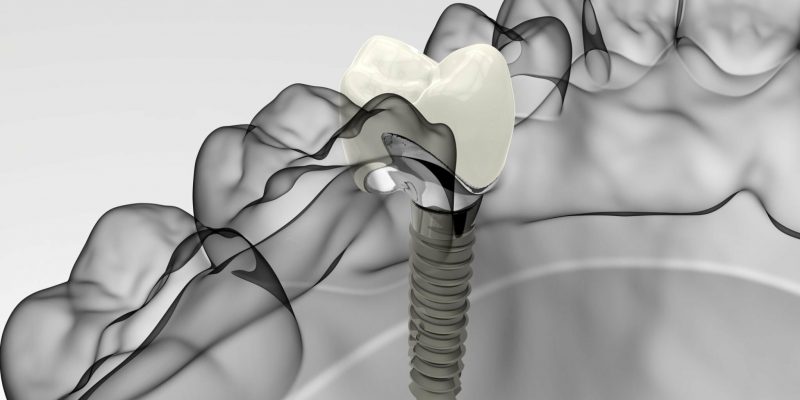Summary:
With over 156+ million Americans missing at least one tooth, have you ever wondered how most of them manage a picture-perfect smile?
The answer is a dental implant! These oral appliances are like a natural-looking artificial tooth anchored to your jawbone. Over the years, oral implants have been the go-to option for millions of individuals, making them the #1 restorative appliance.
In this blog, we take a closer look at:
- Dental Implants – Science Behind the Artificial Tooth
- The Implant Process – What Goes Behind the Scenes?
- How Implants Impact Jawbone Preservation
- Dental Implants and Adjacent Teeth
- Long-term Effects of Implants on Oral Health
Continue reading as we learn more about false tooth implants in the following sections.
Dental Implants – Science Behind the Artificial Tooth
Dental implants are prosthetic teeth designed to mimic your natural tooth. A dental implant primarily comprises three main components, namely:

- Implant: The implant is like a screw that is posted surgically into your jawbone. It substitutes for your tooth root, providing a solid base for the oral appliance.
- Abutment: The abutment is the second core part of an implant. It connects the implant to the crown and is visible over the gumline.
- Crown: The crown is the last part of a dental implant. It sits on the implant to give you the look and feel of a natural tooth.
Dental fixture’s fundamental function and goal is to provide a secure basis for prosthetic teeth. Dental fixtures, as opposed to typical tooth replacement solutions such as bridges or dentures, mirror the structure of natural teeth. They enhance functionality and aesthetics, allowing patients to speak, smile, and eat comfortably.
The Implant Process – What Goes Behind the Scenes?
Once you visit your nearest dentist in Bloomfield for the oral implant procedure, they will walk you through the following stages of the treatment:
Stage 1 – Preparation:
The first stage of the implant treatment generally begins with the necessary preparation. To design a personalized treatment plan, the dentist will take x-rays and imprints of the patient’s teeth. They will also give you pre-surgery advice, such as not smoking or taking certain drugs.
Pretreatment procedures (if needed):
Your dentist may suggest pretreatment procedures to ensure the success of the operation. These techniques may differ based on the patient’s demands and circumstances. Bone grafting, scaling, cleaning, and extraction are a few examples.
Stage 2 – Surgery:
The surgery begins in the second stage of the treatment. Dentists generally use local anesthetics, typically used for dental implant surgery.
At this stage, the prosthetic oral root is inserted into the jawbone through a tiny incision in the gum tissue made by the dentist. While the implant heals, the patient is given a temporary replacement bridge or tooth.
Stage 3 – Osseointegration and Abutment Placement:
Once the implants are placed in your gum, they will osseointegrate with the jawbone for several months. The osseointegration process generally highlights a healing process as it lays the groundwork for the new oral appliance.
Besides, once your implant has healed and fused with the jawbone, it’s time to place abutment on the implant. This little component joins the implant to the oral appliance.

Stage 4 – Replacement Tooth or Bridge:
Finally, the dentist will screw the appliance into place on the abutment. This replacement tooth will seem and operate exactly like a natural tooth, giving the patient better oral health and a more confident smile.
Tip:
While looking for the ideal teeth implant professionals, look for dentistry with cutting-edge oral technologies. Your chosen clinic should have advanced technologies like 3D printing and digital imaging to provide accurate implant placement and restorations, increase treatment results, and lower the risk of problems.
How Implants Impact Jawbone Preservation
Tooth loss can have serious consequences for the underlying jawbone. When a tooth falls out or is removed, chewing forces no longer stimulate the jawbone. As a result, the bone gradually begins to resorb or degrade.
This might result in face alterations such as aged or hollow appearance. This is critical for the preservation of the jawbone. They offer essential stimulation to the jawbone while chewing by functioning as fake roots. This stimulation promotes bone density and prevents bone loss.
Preserving the jawbone ensures the implant’s stability and lifespan while adding to the facial bones’ strength and structure.
Dental Implants and Adjacent Teeth
Dental implants, in addition to preserving jawbone, improve the alignment and stability of neighboring teeth. When a tooth is lost, the teeth next to it might move or tilt into position over time.
This can result in biting issues, difficulty with adequate oral care, and probable teeth loss. It prevents nearby teeth from moving by replacing the lost tooth and providing stability. They keep neighboring teeth aligned, ensuring correct occlusion and bite.
This improves overall dental function, helps to improve oral hygiene, and lowers the risk of subsequent teeth loss.
Benefits Of Dental Implants For Oral Health
1. They’re a more permanent solution
Unlike other replacement solutions such as dentures or bridges, dental fixtures are a long-term solution since they are surgically placed into the jawbone. Placing the implant of teeth gives stability and longevity, allowing patients to maintain a functioning and natural-looking smile for years to come.
2. Implants prevent bone loss:
The capacity of implants to induce bone formation is one of its key advantages. When a tooth is pulled, the surrounding jawbone deteriorates due to a lack of stimulation. Dental fixtures, on the other hand, work as prosthetic roots and preserve the jawbone’s integrity, avoiding bone loss and retaining face structure.
3. They improve oral function:
When done by professionals at New Mexico Dental Implants, these appliances restore complete chewing capability, allowing people to consume their favorite meals freely. They give a firm and secure base for biting and chewing, supporting optimal digestion and general health.
4. Enhance speech and confidence:
Your missing teeth can significantly impact your speech, creating issues with clarity and pronunciation. It closes the gaps and restores normal speaking patterns. Furthermore, fixtures boost confidence and self-esteem by improving the smile’s appearance. This improves both personal and professional social connections.
5. Promote oral health:
Unlike other oral replacement methods, dental implants do not necessitate changes to surrounding healthy teeth. This helps to retain natural teeth while also improving overall oral health. It is also simple to clean and maintain, lowering the risk of dental disorders like gum irritation or decay.
Long-term Effects of Implants on Oral Health
-
Improved bone density:
When teeth are lost, the jawbone deteriorates, resulting in bone loss and facial anatomy alterations. Anchored dental fixtures stimulate the bone, reducing bone loss and increasing bone density.

-
Improved oral hygiene:
Implants are simple to care for and maintain, requiring as much brushing and flossing as natural teeth. Dental fixtures can minimize the incidence of decay and periodontal disease, among other oral disorders, by encouraging improved oral hygiene.
-
Improved appearance:
Dental implants have the appearance and feel of natural teeth, enhancing the attractiveness of your smile and facial structure. They help prevent the sunken-in effect that might result from tooth loss, allowing you to maintain your young appearance. It is one of the most common benefits of oral fixtures that patients anticipate.
Takeaway
- Oral implants are a great alternative to missing natural teeth. They give you the look, appeal, and confidence of a natural smile.
- Unlike other replacement methods, fixtures do not necessitate changes to surrounding healthy teeth.
- Once you lose a tooth, the teeth next to it might move or tilt into position over time.
- Don’t lose the charm in your smile; make the most of your aesthetics with our Sundance Smiles experts today!

